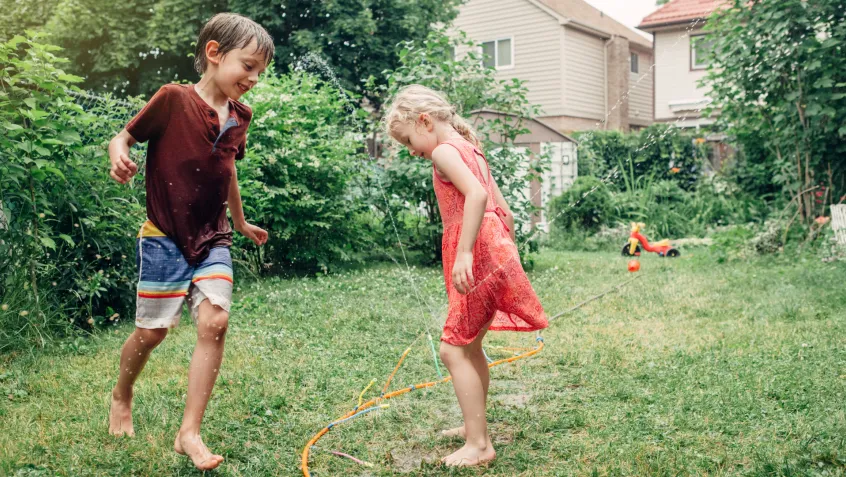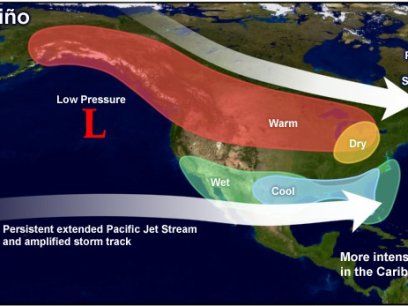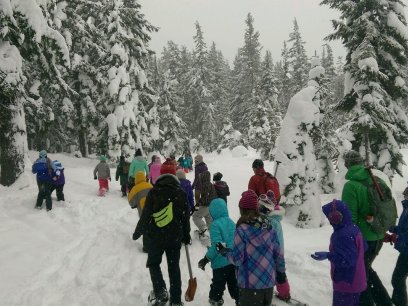
If you’ve ever felt the warmth of a sunny day or taken a deep breath of fresh air while hiking a mountain trail, you have experienced firsthand the mental and physical health benefits of nature.
“Everyone knows that being outside feels nice. But it is a newer phenomenon to talk about the mental health benefits and ways that we can be more mindful while experiencing nature,” said AshaLetia Henderson, NEEF Health Program Coordinator.
There is a growing body of research that shows how green spaces reduce stress and improve the mental health of people of all ages. One 2009 study found that “doses'' of nature can be as effective as medication to temporarily improve concentration for children with ADHD. Another study found that greener settings reduce emotional dysregulation and aggression. Spending time in nature can also be healing for former members of the armed forces experiencing post-traumatic stress disorder.
“In our ‘go go go’ society, it can be easy to forget to make time for nature,” Henderson said. To help, NEEF developed a Health & Wellness engagement guide in partnership with the USDA Forest Service (USFS) and National Park Service (NPS) filled with real-word examples of environmental education activities that make the connection between nature and health. The guide also provides an introduction to activities like forest bathing, which is popular internationally but less known in the United States.
Understanding the Connection Between Climate and Mental Health
NEEF’s Climate Mental Health Initiative connects healthcare professionals and educators with resources to use green spaces as a tool for mental wellness. The project builds on our organization’s past and ongoing work—such as our Greening STEM place-based education approach—to make the environment more accessible, relatable, relevant, and connected to the daily lives of all Americans.
NEEF and the USFS hosted a well-attended webinar in August 2023 examining the toll that climate change takes on mental health and how healthcare professionals, educators, and community leaders can help youth navigate their emotions related to climate change.
Featured guest speaker, Deputy US Surgeon General, Rear Admiral (RADM) Denise Hinton, explored the nuance of climate change-related trauma experienced by children and adolescents and its negative mental health effects. The webinar shared effective strategies for educators and caretakers to engage with youth in conversations about climate emotions to build mental resilience.
“Climate change often feels so big and out of our control,” said Henderson. “It is important not to catastrophize the situation while also recognizing the real impact that climate anxiety and grief can have on the mental health of young people.”
Looking ahead, NEEF is partnering with the Climate Mental Health Network and the USFS to develop resources to help educators and staff on public lands communicate about climate change.
Health Equity and Barriers to Access

Just as climate change disproportionately impacts the most vulnerable, some people do not have equal access to the outdoors.
“Nature is a reprieve—but what do you do when there is no nature around? BIPOC communities face this reality every day,” said Henderson. “Your zip code is one of the top indicators of your health outcomes.”
To bring more awareness to these experiences, NEEF and the USFS hosted a webinar in December 2023 geared toward social and community health workers that focused on nature-based trauma-informed care in BIPOC (Black, Indigenous, and People of Color) communities. In addition to facing safety concerns in public spaces, BIPOC communities are disproportionately affected by climate-related weather events, which may lead to increased trauma and mental health disturbances.
During the webinar, eco-feminist Brenda Richardson shared success stories and practical tips from her work in southeast DC, where higher rates of violence and chronic disease are real concerns in many neighborhoods. The discussion highlighted opportunities for collaboration with law enforcement and local organizations to use green spaces as a tool for mental wellness. Building a sense of community and a feeling of togetherness is crucial.
This important conversation on environmental justice and improving health equity intersects with NEEF’s pediatric asthma initiative. The free online course helps healthcare providers integrate the environmental management of asthma into their work.
“One in four Black children has asthma, and they are twice as likely to be hospitalized,” said Henderson. “This is another example of the often-stark difference in experiences between BIPOC and non-BIPOC families.”
Learn More About the Benefits of Environmental Education and Access to Nature

Ready to experience the many health benefits of the outdoors for yourself? Remember: connecting with nature is not one-size-fits-all.
“Even just looking at a photo of something nature-related can produce dopamine and reduce stress,” said Henderson. “Use what you have, until you have more.”
The following environmental education resources are full of useful information for incorporating the outdoors into lesson plans, health care regimens, and your daily life:
- Public Lands Engagement - Health & Wellness Guide: Experts from NEEF, the USFS, and NPS share strategies for planning and executing successful health and wellness activities on public lands of all types and sizes.
- Climate Change and Mental Health: Educating for Resilience Webinar Recording: Learn how to help students build resilience to the mental health impacts of climate change.
- Using Nature to Improve Mental Health and Well-Being Webinar Recording: Explore the mental and physical health implications of nature scarcity and how engaging in green spaces can be a source of healing and restoration for BIPOC communities.
- Benefits of Environmental Education: Environmental education is often lauded by educators as an ideal way to integrate academic disciplines, stimulate the academic and social growth of young people, and promote conservation of the natural environment. This article cites specific academic sources to illustrate the many ways that environmental education benefits students.


